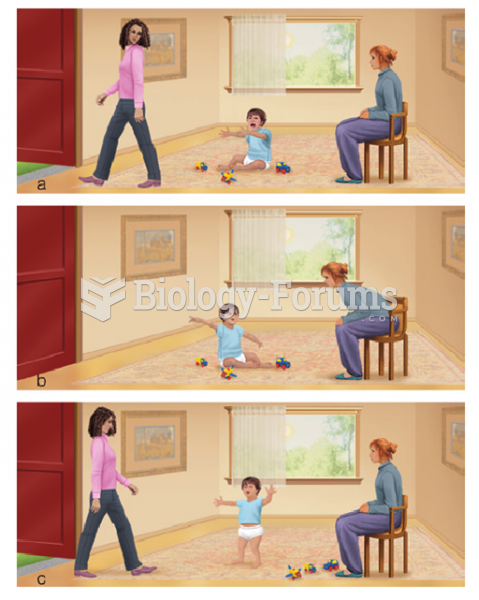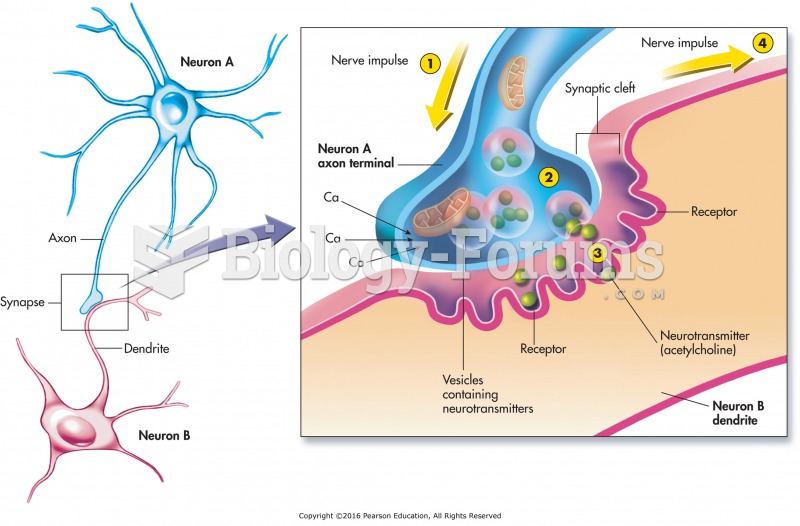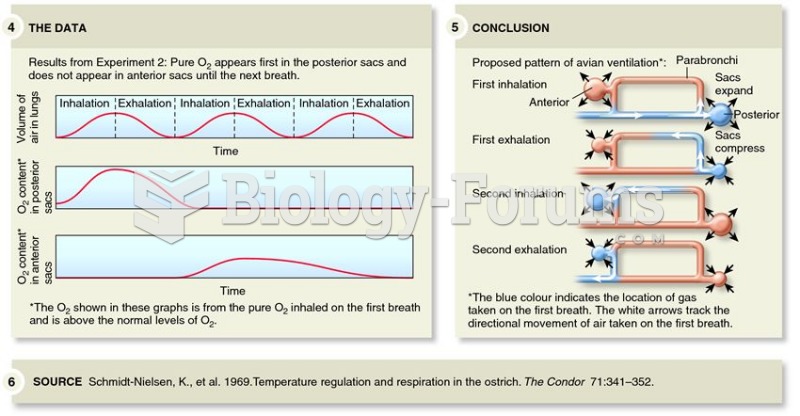|
|
|
Asthma-like symptoms were first recorded about 3,500 years ago in Egypt. The first manuscript specifically written about asthma was in the year 1190, describing a condition characterized by sudden breathlessness. The treatments listed in this manuscript include chicken soup, herbs, and sexual abstinence.
The average human gut is home to perhaps 500 to 1,000 different species of bacteria.
Side effects from substance abuse include nausea, dehydration, reduced productivitiy, and dependence. Though these effects usually worsen over time, the constant need for the substance often overcomes rational thinking.
Drug abusers experience the following scenario: The pleasure given by their drug (or drugs) of choice is so strong that it is difficult to eradicate even after years of staying away from the substances involved. Certain triggers may cause a drug abuser to relapse. Research shows that long-term drug abuse results in significant changes in brain function that persist long after an individual stops using drugs. It is most important to realize that the same is true of not just illegal substances but alcohol and tobacco as well.
Medication errors are three times higher among children and infants than with adults.
 The strange situation. The Strange Situation features a series of episodes in which (a) the mother l
The strange situation. The Strange Situation features a series of episodes in which (a) the mother l
 The chemical synapse. Step 1: The impulse travels down the axon. Step 2: Vesicles are stimulated to ...
The chemical synapse. Step 1: The impulse travels down the axon. Step 2: Vesicles are stimulated to ...





